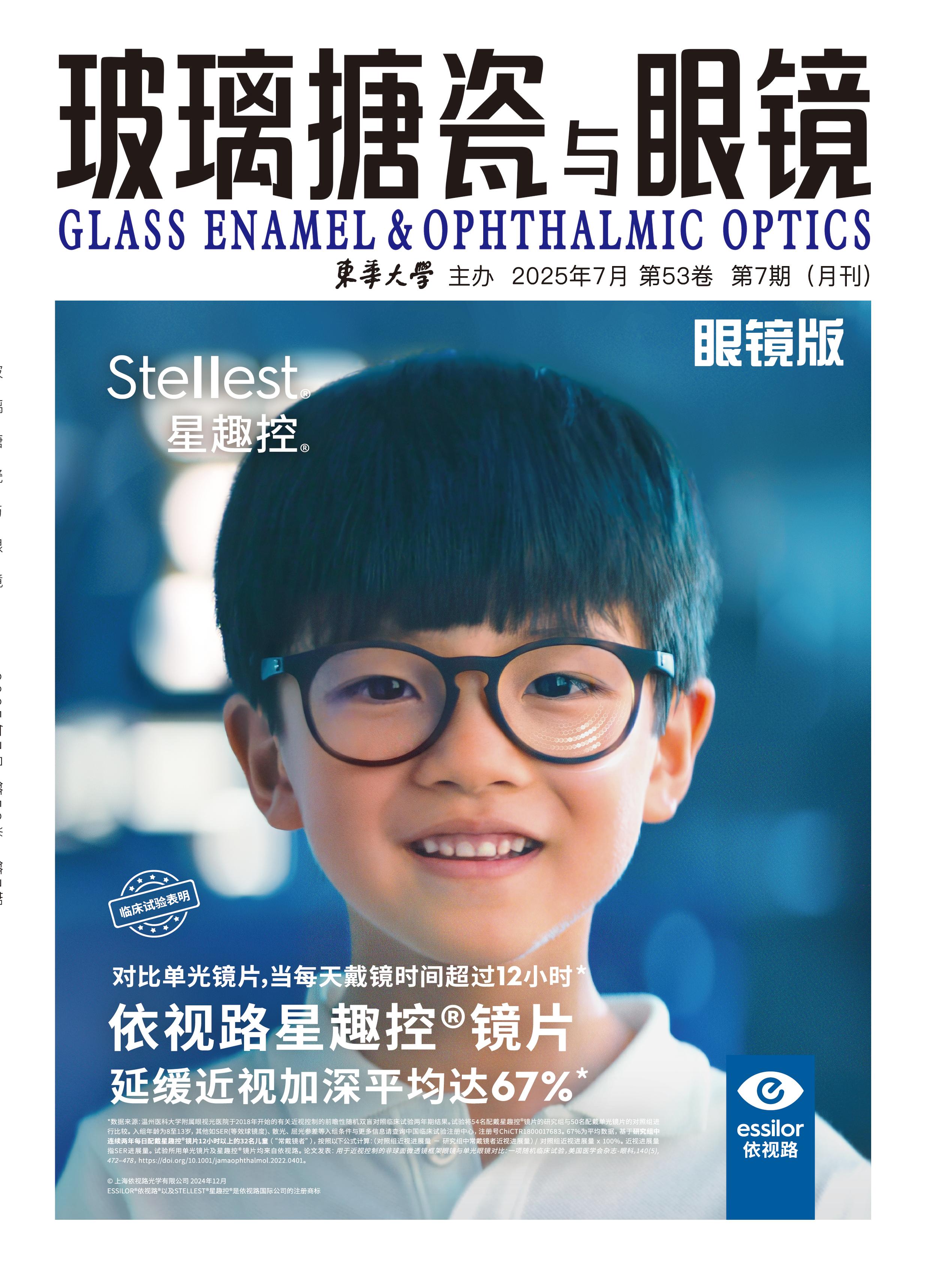
Glass-lined chemical equipment is an irreplaceable production equipment in the petrochemical and pharmaceutical industries, which is made of enamel and metal matrix by high-temperature melting. It has the dual advantages of metal strength and glass corrosion resistance and easy cleaning. However, cracks are likely to occur in service, causing the enamel to fall off, affecting the safe operation of glass-lined equipment. To solve this problem, the effect of zirconia content and particle size on fracture toughness was studied by adding zirconia during the glass-lined sintering process. The research results showed that the three-point bending performance of the glass-lined board was significantly improved when the mass fraction of zirconia addition was 2. 2 wt%, and the three-point bending performance was the best when the zirconia particle average diameter was3μm.
Ultra-thin float glasses with three thicknesses were annealed at different rates to test their elasticity modulus and investigate the effect of annealing rates on the elasticity modulus of ultra-thin float glasses. The test results showed little difference in elasticity modulus values for glasses with different thickness at the same annealing rate. As the annealing rate decreased, the elasticity modulus values of the glass with the same thickness became larger. When the annealing rate decreased to a certain value, the annealing rate continued to decrease, and the modulus of elasticity modulus values remained unchanged.
The principles and key points of process design for furnace workshop of domestic glass enterprise were summarized, including the process layout requirements of whole plant and various forming equipment, confirmation of main process technical data, and requirements for setting up environmental protection and labor protection measures.
With the iterative progress of flat glass production and manufacturing technology, the production process is becoming increasingly mature, and market competition is becoming increasingly fierce. At present, float glass downstream customers commonly use single glass specifications of more than 350 types, and frequently switch thickness and quality levels, which puts higher requirements on flat glass storage management and glass product lifting and transportation technology. Through re-planning,upgrading of shelves, innovation of hoisting device and optimization of management mode, the storage capacity of a large flat glass production line was maximized, the efficiency of hoisting and warehousing was improved, and the storage requirements of the expanded finished product warehouse were met.
The generatation of bubbles at tin bath bottom in ultra-thin glass production was studied by analysing the causes, influencing factors and impact on product quality. The effective strategies to control the phenomenon of bottom bubbles were discussed. The results indicated that reasonable process,parameter control and equipment maintenance were key measures to reduce the bottom bubbles in production process.
The service life of furnace is not only related to design, refractory selection, daily maintenance and glass formula, but also closely to the quality of construction. Poor masonry quality will accelerate the blockage of the furnace regenerator, which can easily cause problems such as crown burning, brick falling and leakage of glass from melting tank, seriously affecting the service life of the furnace. Some key points and precautions in the construction of regenerative furnace were introduced, including the calibration and positioning of furnace foundation, the steel columns installation, the rider arches masonry, the wall masonry of regenerator, the arrangement of cylindrical bricks, and the masonry of the insulation layer at the bottom of melting tank.
The differences in accuracy, repeatability and uniformity between the tablet pressing method and the melting method for the detection of electronic glass batch were compared by using an X-ray fluorescence spectrometer. It was showed that the tablet pressing method has the advantages of high cost-effectiveness and no need for additional materials, making it an optimized choice for detecting the uniformity of electronic glass batch. The tablet pressing method was basically consistent with the melting method in the uniformity of the batch, and can also meet the production needs in terms of accuracy. Therefore, the tablet pressing method will has important application value.
The application and testing mechanism of the two common activation energies of glass melt,namely conductivity activation energy and viscosity activation energy, were introduced. On this basis, the conductivity activation energy and viscosity activation energy of the glass melt with typical E glass formula were calculated. The results showed that the conductivity activation energy was 162.6 to 194.9 kJ/mol,and the viscosity activation energy was 247.3 to 257.2 kJ/mol. After B2O replaced CaO with equal mass fraction, the electrical resistivity and viscosity of glass melt increased, but the conductivity activation energy and viscosity activation energy of the glass melt decreased. It is shown that the activation energy of glass melt is affected by the change of components, and the specific mechanism and degree of influence need to be further studied.
According to GB/T 28209-2023 Methods for Chemical Analysis of Borosilicate Glasses, the content of boron trioxide in borosilicate glass was measured. Based on this detection method, a mathematical model was established and the sources of uncertainty in the detection process were analyzed and evaluated. According to the results, it can be seen that the judgment of the titration endpoint is the biggest factor affecting the determination.
Take a rolling glass project in India as an example, the electric power distribution systems design of low voltage variable frequency motor for intermediate oil station was discussed. Combined with the national standards and engineering project, how to correctly design the electric power distribution systems of low voltage variable frequency motor was analyzed.










